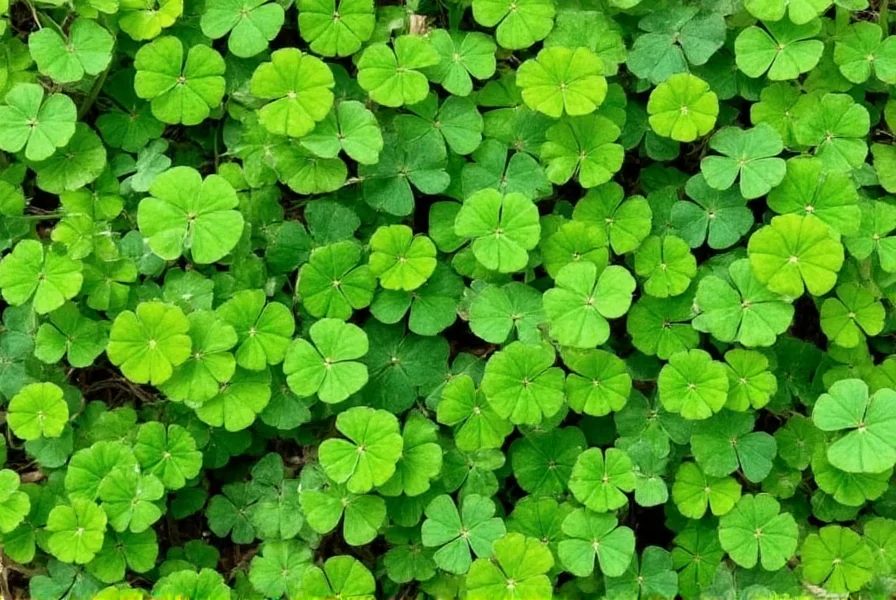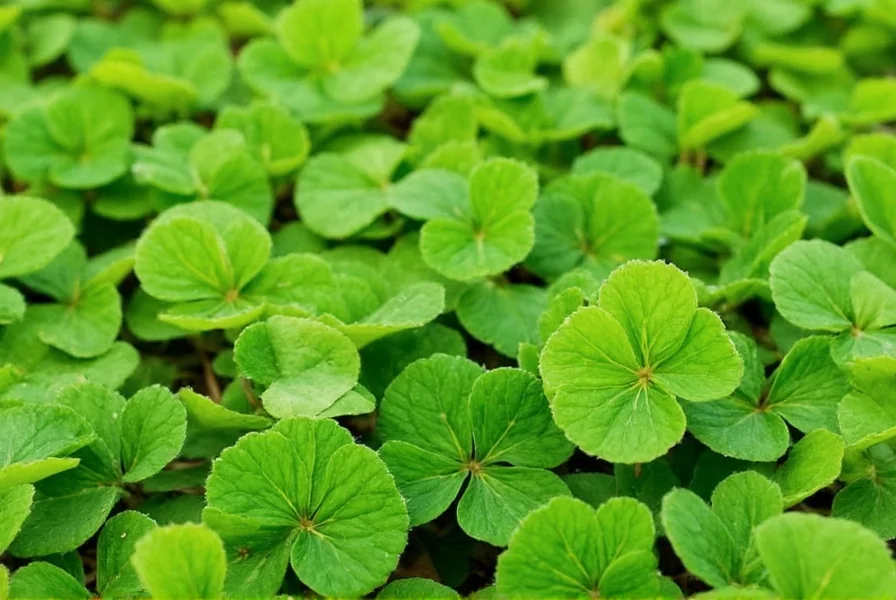For decades, clover was considered a desirable component of lawn seed mixes until herbicide companies rebranded it as a weed in the 1950s. Today, this resilient plant is making a comeback as homeowners seek sustainable alternatives to resource-intensive traditional lawns. Understanding why clover appears in your yard and how to manage it properly can transform your approach to lawn care.
Why Clover Thrives in Lawns
Clover establishes itself in lawns primarily because it fills ecological niches where grass struggles. This hardy perennial prefers compacted soil with low nitrogen levels—conditions often created by heavy foot traffic, improper mowing, or insufficient fertilization. Unlike turf grass, clover tolerates drought better due to its deep taproot system and fixes atmospheric nitrogen into the soil through root nodules, essentially fertilizing itself.
When evaluating why is there clover in my lawn, consider these common triggers:
- Soil compaction from frequent foot traffic
- Low nitrogen levels in soil
- Shallow grass root systems from frequent shallow watering
- Mowing grass too short (below 3 inches)
- Heavy clay or poorly draining soil

Benefits of Clover in Lawns
The resurgence of interest in white clover in lawn systems stems from compelling ecological advantages. This humble plant offers multiple benefits that conventional turf grass can't match:
| Benefit | Explanation |
|---|---|
| Nitrogen Fixation | Clover converts atmospheric nitrogen into plant-usable form, reducing or eliminating need for synthetic fertilizers |
| Drought Tolerance | Requires 50-75% less water than traditional turf grass once established |
| Pollinator Support | Provides essential nectar source for bees and other beneficial insects |
| Soil Improvement | Deep roots break up compaction and improve soil structure over time |
Many homeowners practicing organic lawn care with clover report significant reductions in maintenance time and costs. Clover stays green throughout summer without supplemental watering that conventional lawns require, making it particularly valuable in drought-prone regions.
Drawbacks of Clover in Lawns
Despite its advantages, clover isn't ideal for every situation. Understanding these limitations helps determine whether clover vs grass lawn better suits your needs:
- Seasonal appearance changes - Clover blooms in spring/summer (creating bee-attracting flowers), then may go dormant during extreme heat
- Texture differences - Creates a less uniform appearance compared to manicured turf grass
- Foot traffic tolerance - While durable, it doesn't withstand heavy play areas as well as some turf grass varieties
- Allergen concerns - Though less problematic than grass pollen, some people experience mild reactions to clover pollen
Managing Clover: To Keep or Remove?
Your approach to clover in the lawn should align with your landscaping goals. Consider these strategies based on whether you want to maintain or eliminate clover:
Embracing Clover in Your Lawn
If you're considering how to maintain a clover lawn, implement these practices:
- Mow at 2-3 inches (higher than traditional lawns) to encourage dense growth
- Water deeply but infrequently to promote deep root development
- Avoid nitrogen fertilizers which favor grass over clover
- Reseed bare spots with micro-clover varieties for a more uniform appearance
- Allow periodic blooming to support pollinators, then mow flowers if desired
Micro-clover varieties like 'Pirouette' or 'Pipolina' offer smaller leaves and less flowering, creating a more traditional lawn appearance while retaining clover's benefits.
Naturally Reducing Clover Presence
For those preferring a clover-free lawn, these how to get rid of clover in lawn naturally methods work without harsh chemicals:
- Improve soil fertility with organic nitrogen sources (compost, corn gluten meal)
- Aerate compacted soil to give grass roots better access to nutrients
- Raise mowing height to 3-4 inches to shade out clover seedlings
- Overseed thin areas with appropriate grass varieties for your climate
- Apply corn gluten meal in early spring as a natural pre-emergent
Creating a Balanced Lawn Ecosystem
The most sustainable approach often involves accepting some clover as part of a diverse lawn ecosystem. Many lawn care experts now recommend clover lawn care tips that integrate rather than eliminate this beneficial plant:
"A completely clover-free lawn requires more inputs and maintenance than a slightly diverse lawn," explains Dr. Elena Rodriguez, turf management specialist. "Small amounts of clover actually strengthen the overall lawn system by improving soil health."
Consider these integrated strategies:
- Maintain 10-15% clover coverage for nitrogen benefits without overwhelming grass
- Use clover in hard-to-maintain areas like slopes or shady spots where grass struggles
- Combine with other beneficial plants like self-heal or yarrow for a resilient lawn alternative
- Focus on soil health rather than plant elimination for long-term results
Conclusion: Rethinking Lawn Perfection
The presence of clover in your lawn represents an opportunity to reconsider traditional landscaping expectations. As water restrictions increase and environmental awareness grows, many homeowners discover that benefits of white clover in lawn systems outweigh aesthetic concerns. Whether you choose to manage, reduce, or embrace clover depends on your specific circumstances, but understanding its role in your lawn ecosystem empowers you to make informed decisions that align with your values and practical needs.
Frequently Asked Questions
Is clover actually good for your lawn?
Yes, clover provides significant benefits for lawns. It fixes nitrogen in the soil, reducing or eliminating the need for synthetic fertilizers. Clover tolerates drought better than most turf grasses, requires less mowing, and supports pollinators. Many homeowners now intentionally incorporate 5-15% clover into their lawns for these ecological advantages while maintaining a traditional appearance.
How do I get rid of clover without harming my grass?
To reduce clover while preserving grass, improve soil conditions that favor grass over clover. Apply organic nitrogen sources like compost or corn gluten meal in spring, aerate compacted soil, and maintain a mowing height of 3-4 inches. Overseed thin areas with appropriate grass varieties and water deeply but infrequently. These methods gradually shift the balance toward grass without using harsh chemicals that could damage your lawn.
Does clover lawn require special maintenance?
Clover lawns require different but not necessarily more maintenance. Mow at 2-3 inches (higher than traditional lawns), water less frequently, and avoid nitrogen fertilizers. Allow periodic blooming to support pollinators, then mow the flowers if desired. Clover naturally suppresses many weeds and stays green during droughts without supplemental watering. Micro-clover varieties require even less maintenance with smaller leaves and reduced flowering.
Will clover take over my entire lawn?
Clover typically won't completely dominate a healthy lawn. It thrives in specific conditions like compacted soil or low nitrogen levels. In a well-maintained lawn with proper fertility and aeration, grass usually outcompetes clover. If you notice increasing clover coverage, it's often signaling underlying soil issues rather than aggressive takeover. Most lawns naturally stabilize with 5-20% clover coverage when conditions favor both plants.
Is clover safe for pets and children?
Yes, white clover is non-toxic to pets and children. Unlike many synthetic lawn treatments, clover requires no chemical herbicides or pesticides. The flowers may attract bees, but white clover blooms produce relatively little nectar compared to other flowering plants, resulting in minimal bee activity. If concerned about bees, mow during early morning when bees are less active, or choose micro-clover varieties that produce fewer flowers.











 浙公网安备
33010002000092号
浙公网安备
33010002000092号 浙B2-20120091-4
浙B2-20120091-4